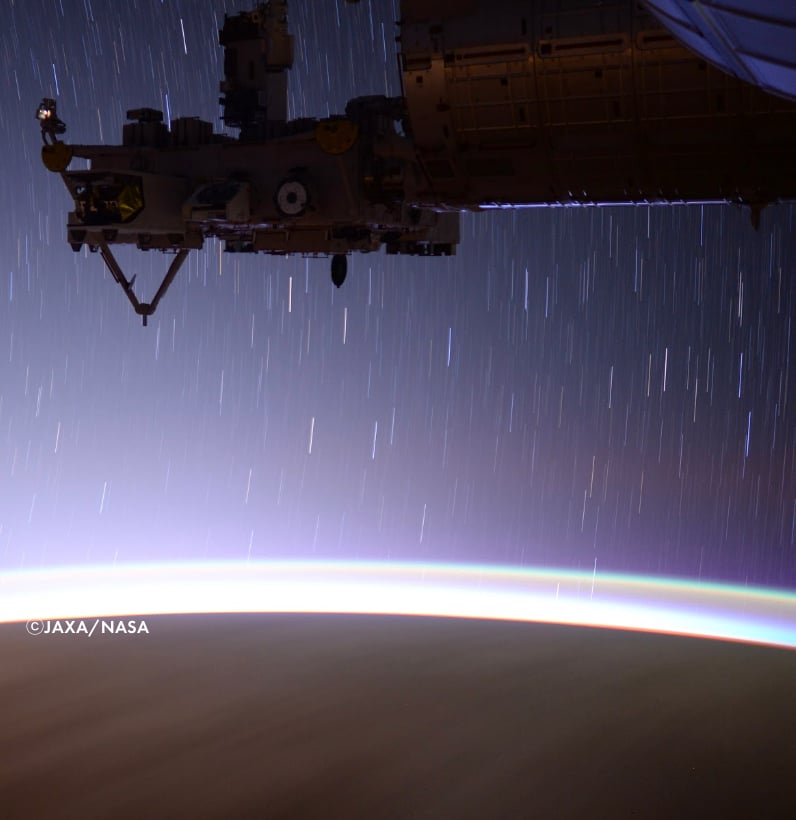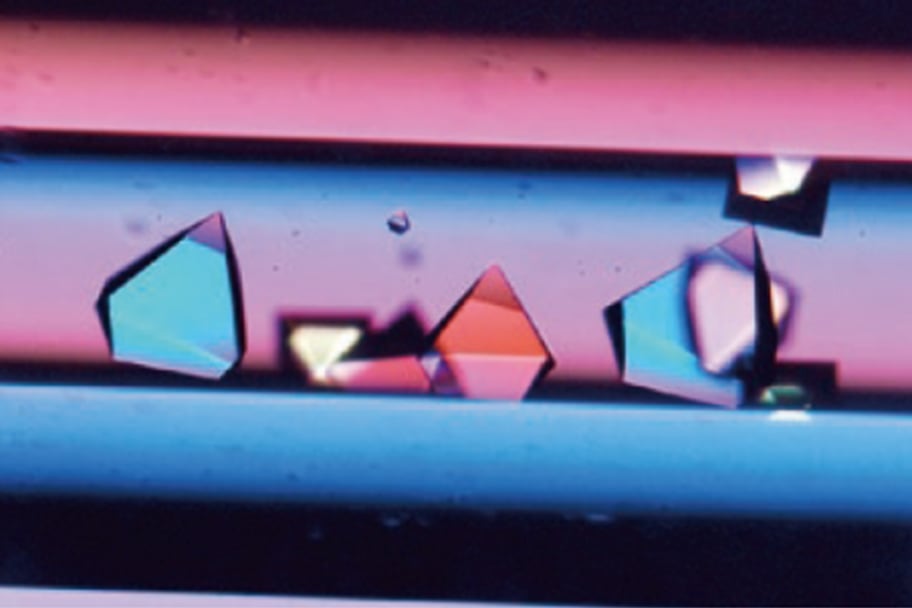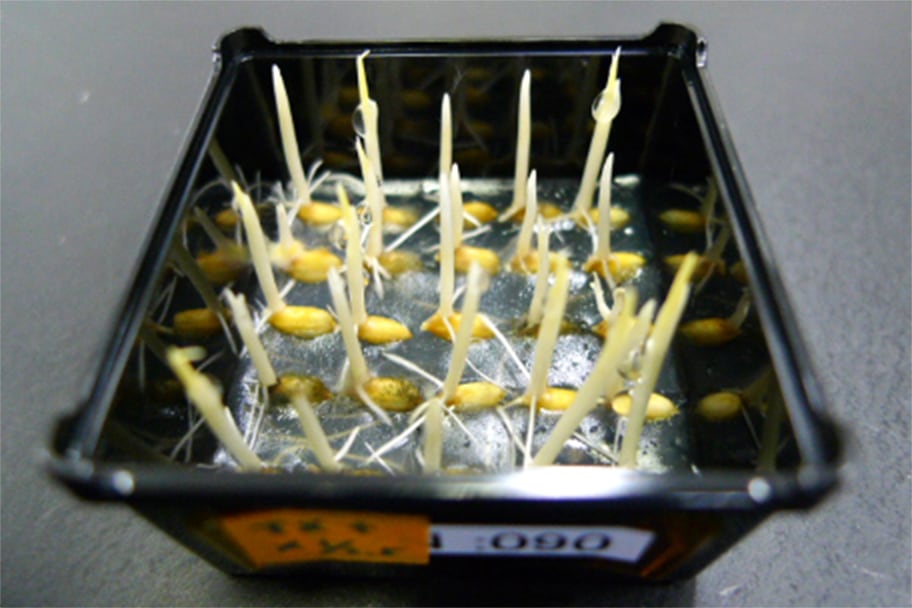What you can do on Kibo
Various experiments are carried out with Kibo using the special environment that is outer space. The results have already begun to bear fruit in numerous fields, including medicine and manufacturing.

A great source of inspiration.
A variety of experiments have previously been conducted at Kibo, achieving revolutionary results in academic, industrial, and technical fields such as life science, space medicine, earth and planetary science, astronomy, and material and physical science. Kibo also has tremendous potential to contribute to further discoveries and problem-solving. Five examples of results that Kibo has achieved thus far, and new initiatives for the future, are presented here.
Supporting a healthy society with longevity.

In Japan, where one in four people is 65 years of age or older, people hope to stay healthy as long as possible. In microgravity, bones weaken extremely quickly, at approximately 10 times the rate seen in people with osteoporosis, and muscles weaken extremely quickly, at approximately twice the rate of people confined to bed. Research focusing on these phenomena, which could be called an accelerated model of aging-like physiological changes, is expected to contribute to the prevention and treatment of locomotive syndrome, in which motor organs such as bones and muscles become atrophied.
Along another line, because convection and sedimentation do not occur in microgravity, protein crystals can be grown with higher quality than on Earth. Using these high-quality protein crystals makes it possible to determine the structure of proteins in more detail, and this is useful for drug research and development.
In the future, we will conduct new experiments, such as crystalizing membrane proteins for drug targets and producing 3D tissues/organs from stem cells for regenerative medicine. We also plan to conduct epigenome research to clarify genetic changes caused by microgravity.


Contributing to a prosperous, safe, and secure life.

Global warming, an increased frequency of extreme weather events, and the food shortages that accompany them … Humanity is currently facing a variety of problems. On “Kibo”, we are working to help solve these kinds of problems and to ensure a prosperous, safe, and secure life. For example, observation of Earth from space is useful for predicting environmental variations and monitoring disasters that cover wide areas. Furthermore, experiments on cultivating plants in microgravity environments are expected to deliver results such as the creation of rice that will not easily be damaged, even by typhoons.
Surgical robots that are now actively used in medicine were created from the technology of Canadarm2, the Canadian robotic arm mounted on the ISS. The Japanese robotic arm (Remote Manipulator System) on “Kibo” is also a practical robot that is capable of fine operations by remote control. This technology is also applicable to medical treatment and nursing care on Earth.
We are beginning a trial to provide the opportunity to perform space experiments more easily, so that “Kibo” can be used to explore a wider range of applications and new ideas with the aim of contributing to the realization of a prosperous, safe, and secure life.


Improving technologies in manufacturing

On “Kibo”, it is possible to manufacture materials with physical properties that would be difficult to obtain under the influence of gravity on Earth. For example, we successfully created large single crystals of next-generation high-performance semiconductor materials by using the environment in which no convection or sedimentation occurs. We are also currently performing an experiment to clarify the mechanism that changes the structure of macromolecules thought to contribute to the maturation of alcoholic beverages and making them mellow.
In the microgravity, liquid can be levitated easily and does not need containers. Also, melted materials can keep them in a stable (spherical) state. This method of handling materials without containers is called “containerless processing”. This processing allows us to closely investigate the behavior of materials in their molten states, which is difficult to do on Earth.
The data obtained from experiments on “Kibo” are useful for creating new innovations and technologies, and for increasing the competitiveness of Japanese manufacturing.
To unexplored space.

We are currently discussing international space exploration to the Moon, Mars, and beyond. For preparing long-duration human spaceflight, we are developing new systems and equipment on “Kibo”, incorporating technology from Earth.
For example, we are developing water recycling systems that are compact, require little power, and do not need filter replacement; remote medical treatment systems for astronauts; and next-generation spacesuits that are lightweight and easy to move in, even on celestial bodies that have gravity.
Japan has many excellent technologies outside of the space development field. By actively incorporating more of these technologies, we will contribute internationally and also establish the technology needed for manned space missions.
Pioneering new fields.

©NASA / Goddard Space Flight Center / Swift
Humankind was born in the gravity of Earth, and science and technology have been developed though research “with our feet on the ground.” Eventually, we leapt from the Earth and put our effort into “Kibo”, a facility that allows us continuously perform experiments in space, where we are free from the effects of gravity. On “Kibo”, we are also conducting scientific research rooted in the intellectual curiosity of humankind.
X-ray observation of the entire sky and elucidation of the mechanisms of ice crystal growth are examples of research that can only be performed in space. In addition, observation of the atmosphere over a wide range from the Earth’s surface up to the upper atmosphere will lead to the creation of new academic fields. We are also making advances in observations aimed at clarifying the acceleration mechanisms of high-energy cosmic rays and the true nature of dark matter.
On “Kibo”, we are looking deeply into scientific truths and pioneering new fields that are possible only in space.
Characteristics of microgravity

Since there is no gravity in space, a variety of changes are observed at a genetic level and a functional level in the body. Investigating the causes of these problems and their solutions may lead to new treatments and countermeasures for problems such as osteoporosis and deterioration of immune function.

On Earth, materials sink or float depending on their density. In microgravity environments, even materials with different specific gravities such as water and oil disperse evenly. This can be useful in creating highly functional materials.

On Earth, when liquids and gases are heated, convection occurs due to differences in specific gravities In microgravity environments, the differences in specific gravities do not cause convection. It is thus possible to create high-quality protein crystals and material structures that cannot be created on Earth, where convection causes problems.

In the microgravity, material can be levitated easily, and melted material stays in a stable (spherical) state without a container. This method of handling materials without a container is called “container less processing”. This processing allows us to closely investigate the behavior of materials in their molten states, which is difficult to do on Earth.
Unless specified otherwise, rights to all images belong to ©JAXA



